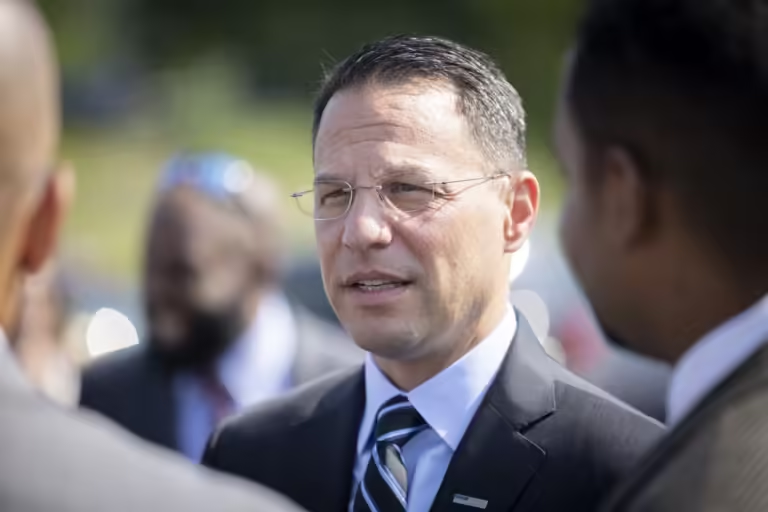For the past forty-plus years, Republicans — just like dysfunctional HOAs — have been stealing from America’s future…
The GOP’s 43-year tax-cuts-for-billionaires-while-we-ignore-the-needs-of-the-country grift has an analogy in condos and homes across America that might help voters understand how it works and how they’ve gotten away with it.
Fully 84% of all homes and apartments built and sold in 2022 came with a homeowner’s association or HOA, and an estimated 27% of all homeowners nationwide currently live in a property controlled by an HOA.
And many are very unhappy about the experience.
According to a survey by Rocket Mortgage, only 47% of HOA residents think their HOA has made their community better, only two-thirds (64%) believe their HOA “honestly handles its finances,” and one in ten people nationwide who have an HOA cite the HOA itself as their main reason for moving.
How and why is this?
Louise and I have lived in five communities with HOAs in two different states. Three (including where we now live) were well managed, kept up the community, and set aside money from the dues every month for the inevitable future maintenance. I was on the board of one of them. The other two ran, essentially, a shell game or reverse Ponzi scheme, which led us to eventually quit those communities and move.
I remember attending a board meeting in one of those “shell game” HOA communities we’d lived in. There were multiple common-area maintenance issues needing attention, but a group who called themselves “low-tax conservatives” had run the board for over twenty years.
There was almost nothing in reserves, so maintenance had been continuously postponed until things hit a crisis level. Then they’d hit us all with a series of “special one-time assessments” ranging from a few hundred to a few thousand dollars to pay for the upkeep. They refused to raise the monthly HOA fee, referring to it as a tax, because, they said, they were “low-tax conservatives”; in fact, they were just cheapskates.
That HOA board had been, in the past and the present, stealing from future homeowners.
They did it so they could enjoy the community during the first 30 or so years — when maintenance costs were minimal — without setting aside money for the future, when things would rot or wear out and need replacement or upgrade.
For the first three decades, they were able to coast with $200/month in dues and no assessments; by the time we arrived when the units were pushing 35 years old, though, the assessments were hitting $3000 to $9000 a year, and, when the buildings’ roofs need repair (soon) it’ll be twice that amount or more.
Fortunately, once we saw the handwriting on that particular wall we were able to sell our condo and move to a well-run community. Americans, though, don’t have that option: Republicans have been running this same shell game or reverse Ponzi scheme against all of us (except the very rich) across the entire country ever since Reagan successfully pitched trickle-down economics to the nation in 1981.
If you’ve ever lived in one of these shell game HOA’s, you now perfectly understand Reaganomics and why it seems that America has deteriorated so badly over the past 40 years.
You could call it the disaster of pothole economics: all across America, roads, bridges, water systems, schools, and other vital public infrastructure have been underfunded and neglected ever since Reagan popularized the idea of “austerity” among Republicans.
In order to pay for the second most massive tax cut for the morbidly rich in history (Reagan cut the top tax bracket from 74% down to 25%), his administration cut spending on education, housing, roads and bridges, and pretty much every other aspect of America’s infrastructure. George W. Bush did the same thing, and Donald Trump tripled down on the scheme.
The result was a $51 trillion transfer of wealth — over a mere forty-three years — from the homes, retirement accounts, and savings of average working families into the money bins of the extremely wealthy. Thirty-four trillion of that transfer show up as our national debt, which was a mere $800 billion ($0.8 trillion) when Reagan first came into office and started this scam.
President Joe Biden and his Vice President, Kamala Harris, ran the first administration of either party to significantly repudiate Reagan’s neoliberalism by injecting trillions into rebuilding our nation (over 35,000 projects) while raising taxes on rich people and corporations to pay for it.
The result was immediately visible, just like in the 1940s, 1950s, and 1960s: we now have the best economy on planet Earth with unemployment lower than any time since the 1960s (and lower than any time in history for women, Blacks, and Hispanics). Inflation has been at or below 0% for the past two months and is annually running around 3% (Reagan never got inflation below 4.1% in his entire 8 years); all across America we’re putting our rural areas, towns, and cities back together.
For the past forty years, Republicans and their administrations have focused almost entirely on taking cash away from working class people and handing it off to the billionaires who own and finance their party. At the top of the list of ways they did this was a series of five tax cuts for the morbidly rich and big corporations adding up to over $30 trillion since 1981.
But they’ve also been cutting spending to compensate for their tax breaks for the billionaire class: They blocked extending the child tax credit this year, throwing millions of American children back into poverty. They’ve fought lifting the cap on Social Security taxes so people making over $168,600 will begin paying on all of their income (millionaires and billionaires currently pay only a tiny fraction of the percentage to support Social Security that the rest of us do).
Fully 100% of congressional Republicans voted against Biden’s Build Back Better program that’s now putting America back together and his American Rescue Plan that lifted millions out of poverty and put millions more back to work. They successfully blocked the Paycheck Fairness Act that would have penalized employers for wage discrimination based on gender; they’ve refused to expand Medicaid in almost a dozen Red states; they even filibustered an attempt to raise the minimum wage from $7.25 to $10.10.
For the past forty-plus years, Republicans — just like these dysfunctional HOAs — have been stealing from America’s future; our infrastructure deficit alone is several trillion dollars, meaning Americans will be paying more in taxes to make up for all those decades of neglect.
Democrats want those tax increases to hit people earning over $400,000 a year; Republican tax proposals, on the other hand, mostly focus on increasing income taxes and fees on working class people while continuing or even expanding tax breaks for the very wealthy.
One of the “low tax” HOAs we used to live in, instead of raising their monthly fee or instituting an assessment, recently negotiated a million-dollar-plus 20-year loan with people’s properties as the collateral to fund painting and repairing serious rot on the buildings.
This should have been paid for with an increase in HOA fees twenty years ago, anticipating the future maintenance and upkeep needs.
But instead they kept the fee low, never built up a reserve, and are now borrowing from the bank. In other words, they’re continuing the all-too-common HOA board scam of requiring future generations to pay for current repairs, just like the GOP budget proposals we’ll see when they return from summer vacation in September will require future generations to pay for their past tax cuts.
It’s the equivalent of Reagan, Bush, and Trump jacking up the national debt to keep things glued together, forcing future generations to pay it off when the bill comes due, while their wealthy corporate funders rob us blind.
Homeowners across America are waking up to these toxic HOA boards, as social media sites for HOA members are forming and local homeowner uprisings are happening against boards, either replacing the board members or, in some cases, even suing them. Some states are even starting to require they build up reserves for future maintenance.
Hopefully, Americans will realize how successfully Republicans have inflicted this very same scam on voters and working class people over the past forty-plus years and vote the bums out this fall.












